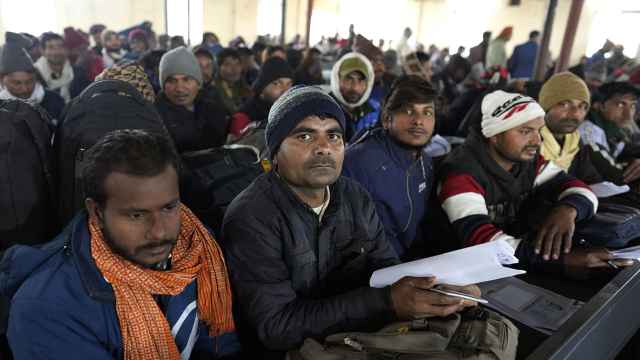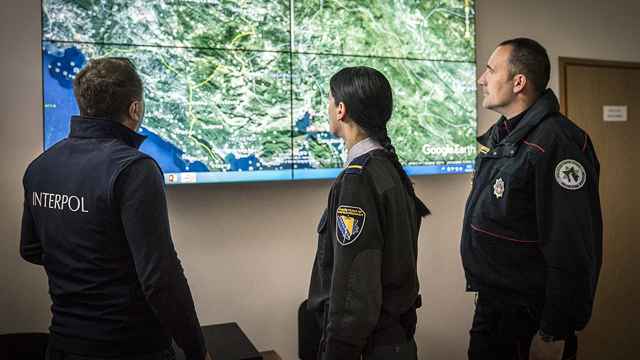Russia lost its position as prime supplier of gas to Europe last year, with Norway edging Russia out of the No. 1 spot for the first time. Although Russia will remain a key supplier to Europe, it is also seeking to diversify export markets for its gas to Asia as part of the strategy to unlock frontier regions like the Arctic and Eastern Siberia for hydrocarbons development.
Gas production from these new regions is intended to enhance export capacity and to replace declines in existing fields. Dynamics in the global gas market are shifting, however, and Russia's ability to secure markets in Asia, which is crucial given that European markets are stagnant, will largely depend on its ability to navigate the challenges and opportunities that these shifting dynamics pose.
Just 7 percent of Russia's gas exports were sold to Asian consumers last year, all in the form of liquid natural gas, or LNG, from the Sakhalin II project. But Russia's gas exports to Asia will expand dramatically if the construction of two new LNG terminals goes ahead: Gazprom's Vladivostok and Novatek's Yamal projects. Rosneft also plans to build a terminal in Sakhalin. If these three projects are realized by 2020, Russia's LNG capacity would increase from 10 million tons per year to about 45 million tons, or to an amount equal to 18 percent of global LNG exports in 2012.
In addition, Gazprom is in talks to supply China with 38 billion cubic meters of gas via a pipeline to link eastern Siberian fields to Chinese consumers. This pipeline's targeted capacity is also significant, being nearly equal to Russia's gas exports to Ukraine last year.
Big plans are therefore underway to link gas resources in the Arctic and to link Russia's eastern regions to well-established Asian gas markets, such as Japan, South Korea, India and China.
In particular, the Yamal LNG project will be the first Russian effort to link Arctic gas to Asia and will represent a key element of the opening up of the Northern Sea Route along Russia's Arctic coastline. At a cost of $20 billion, a final investment decision is expected for Yamal LNG by the end of 2013. Arctic-capable LNG tankers will cross the Northern Sea Route to Asia, except during winter when cargoes will be directed to Europe for regasification or re-export to other destinations.
The competition Russia's LNG faces to supply Asia — the largest LNG market and the fastest-growing for gas demand — will be intense, however. Australia is on the cusp of an LNG capacity boom, with seven projects under construction that will add around 60 million tons per year of capacity by 2020. Several of these projects have suffered cost blowouts and the pace of further projects to reach the final investment decision stage will slow down. But Australia is forecast to be the largest LNG exporter by 2020, surpassing Qatar.
North America will also emerge as a new LNG-exporting hub. Until recently, it was expected that the U.S. would be an importer of LNG, but this expectation from LNG exporters was dashed by the shale gas boom. Now, the U.S. will be exporting LNG instead. By 2018, two projects with a total capacity of 25 million tons per year will be operating. In Canada, a further two LNG projects with a combined maximum capacity of about 35 million tons per year have received government approval to export. In both countries, further project applications are in the regulatory pipeline.
Meanwhile, substantial discoveries of offshore gas in East Africa have raised prospects of that region becoming an LNG-exporting hub in the longer term. For example, three projects in Mozambique and Tanzania are proposed that would bring a further 27 million tons per year on line.
There is likely to be a greater sense of urgency in Russia about gaining a foothold in Asia's gas markets because of the weak fundamentals for natural gas in Europe. Poor economic performance, cheap coal and promotion of renewables have taken their toll on European gas demand. In addition, European policymakers have made it clear that they want to diversify the EU's sources of gas supply.
It will take until the second half of this decade before gas consumption in Western Europe, which slumped by 10 percent between 2008 and 2012, will recover to levels seen on the eve of the 2008-09 financial crisis. The EU's production-consumption gap will still grow in the longer term because of continued decline in domestic production, but the growth rate of Europe's import requirement has moderated as a result of weak demand.
Finally, while shale gas development is unlikely to take off globally at the same pace that has occurred in the U.S., gas import dependent markets in Europe and China will still pursue it. China has an ambitious target to reach shale gas output of between 60 and 100 billion cubic meters by 2020. This won't be reached, but it reflects China's intent. There may be some hype about shale, but its impact cannot be dismissed out of hand either. For example, the development of shale gas in the U.S. has been one reason why Gazprom's Shtokman project remains continually delayed.
Despite competitive trends on the supply side, there are also opportunities. Global gas consumption growth will be strong, especially growth in the requirement for LNG. Demand for gas will grow much faster than for oil and coal between 2010 and 2035, according to the International Energy Agency, and this will be driven by demand from resource-poor and import-dependent Asian economies. Not only will gas consumption rise because of economic growth, but also because big energy-consuming economies like China and India will shift from coal usage to natural gas. As a result of this, China and India will be the main drivers of global LNG demand. Competition for these gas markets will be intense, but the demand will be there. But with the emergence of new LNG-exporting hubs, such as in North America and East Africa, suppliers will need to show some flexibility in pricing.
With the North American market a nonstarter and the European market currently stagnating, Russia seeks to target markets in Asia, where the demand for gas will be strong and the prices higher. New developments in the Arctic and in Eastern Siberia will be earmarked for Asian consumers. But in the case of the Arctic building export infrastructure, opening the trade route will be challenging given the environmental risks that need to be minimized.
Last year, the International Energy Agency suggested that we are about to enter a "golden age of gas." If this is the case, there will be challenges and opportunities for Russia and other big gas exporters. Successfully negotiating these dynamics, however, will depend on Russia's ability to diversify export markets as its frontier regions for gas supply are developed in the coming years.
Peter Kiernan is lead energy analyst at The Economist Intelligence Unit.
A Message from The Moscow Times:
Dear readers,
We are facing unprecedented challenges. Russia's Prosecutor General's Office has designated The Moscow Times as an "undesirable" organization, criminalizing our work and putting our staff at risk of prosecution. This follows our earlier unjust labeling as a "foreign agent."
These actions are direct attempts to silence independent journalism in Russia. The authorities claim our work "discredits the decisions of the Russian leadership." We see things differently: we strive to provide accurate, unbiased reporting on Russia.
We, the journalists of The Moscow Times, refuse to be silenced. But to continue our work, we need your help.
Your support, no matter how small, makes a world of difference. If you can, please support us monthly starting from just $2. It's quick to set up, and every contribution makes a significant impact.
By supporting The Moscow Times, you're defending open, independent journalism in the face of repression. Thank you for standing with us.
Remind me later.






